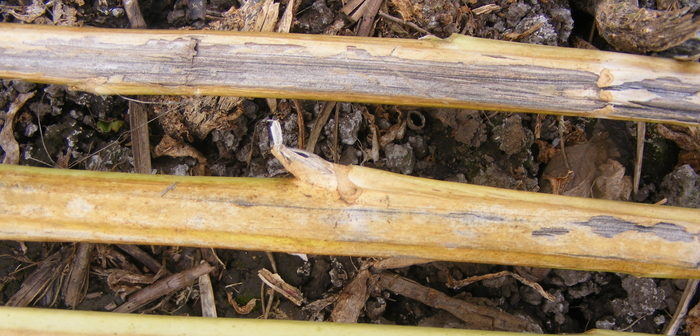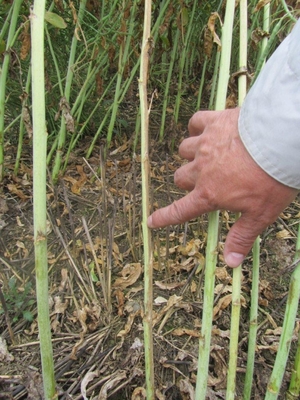Verticillium wilt is a disease that cannot be controlled by a crop protection product. If there is Verticillium in your soils, it can be there for up to ten years, so the only practical way to minimise this damaging disease is to grow a rape variety which has known tolerance to this disease. Neil Groom, technical director for Grainseed, says that “agronomists should be identifying the causes of wilted plants or premature ripening in rape now. Wilted plants can be a result of either Phoma canker or Verticillium. Usually Phoma canker is seen earlier in June with the cankers being visible at the stem base on susceptible varieties. Growers should remove individual plants and scrape the surface around the stem base to confirm diagnosis. Sunken brown or necrotic lesions at the stem base will indicate stem canker. These lesions can encircle the stem and weaken it, causing premature ripening, lodging or even plant death.”
“If wilted plants are caused by Verticillium, symptoms are usually seen about now when the crop starts to ripen, so look for yellowing leaves, premature ripening of branches and grey stripes down stems, often on one side only, or if severe the whole cross-section of a stem. Underneath these vertical stripes, when the outer stem layer is peeled off, you will see grey vascular tissue and using a hand lens, you can see tiny black dots or microsclerotia,” advises Neil.
AHDB are now screening for Verticillium wilt with a view to adding this as a resistance rating on the rape list in the future. The latest trials give Catana one of the best tolerances to Verticillium and other varieties are close to this level of tolerance. Varieties such as Es Mambo, Keeper and Elevation all have proven tolerance to Verticillium and Es Mambo has been the best variety in independent trials conducted by the AICC.
Verticillium can cause yield losses of up to 50%, reducing seed size. High risk conditions include warm dry springs, tight rape rotations, use of infected seed, stressed crops and high level of inoculum in soil.
“The only way to control Verticillium sustainably is to use tolerant varieties,” says Mr Groom. “So if you have this disease in your current crop, change your variety choice and move away from that variety to one with known tolerance.”





